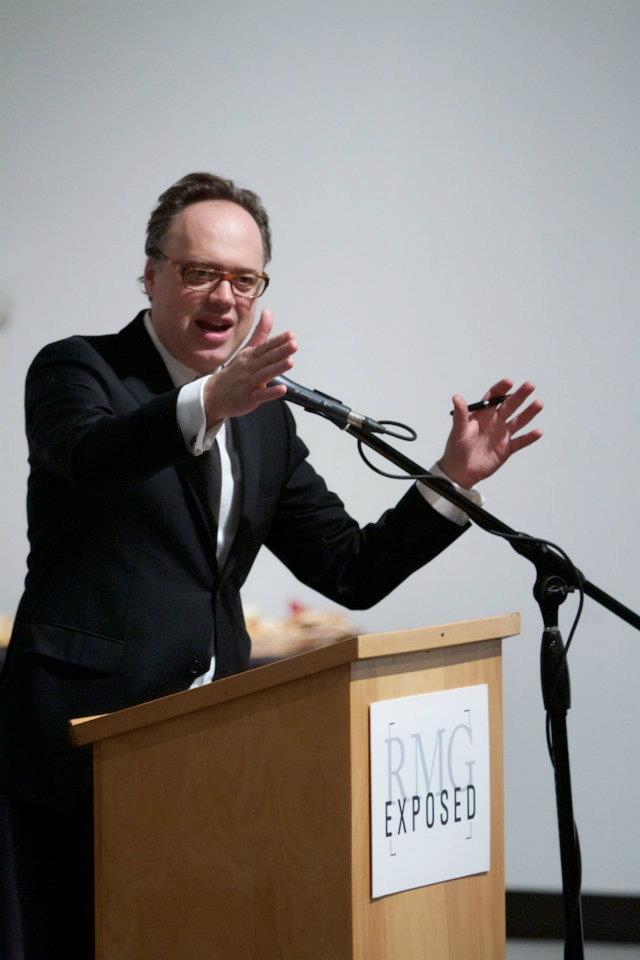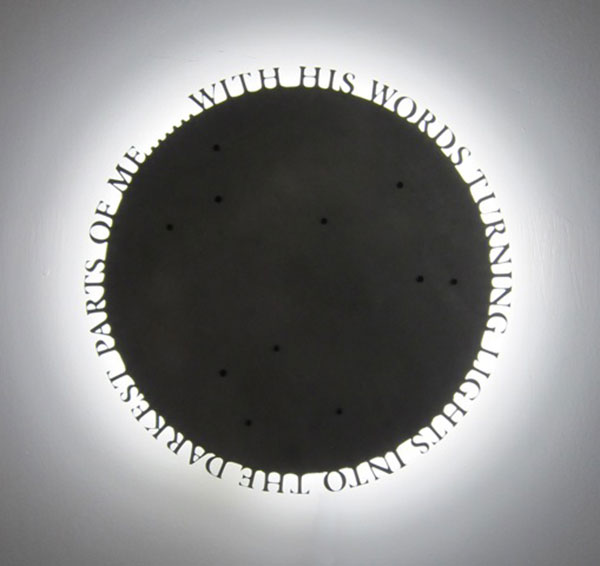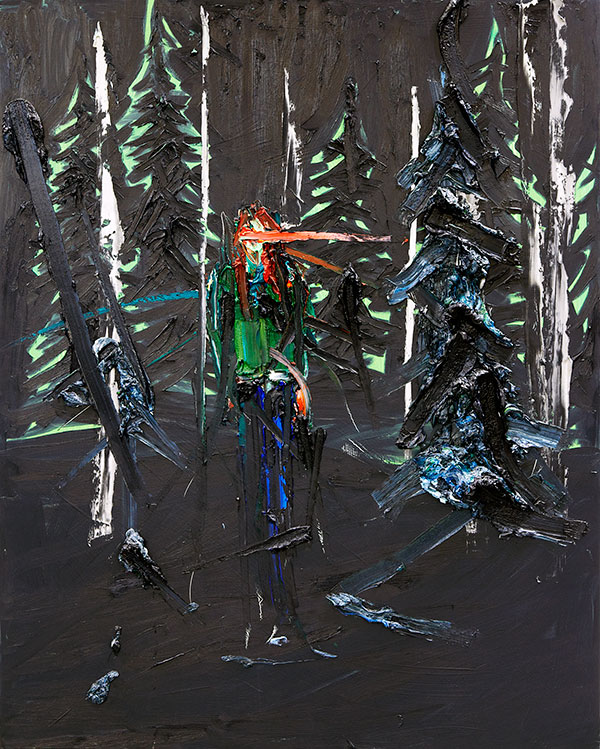Interview with Stephen Ranger (S.R.), Vice President of Development of Waddingtons Auctions by Phil Anderson (P.A.)
Concrete Contemporary was started by Stephen Ranger and this years sale had 120 lots with a diverse group of artists works.
 Stephen Ranger founder of Concrete Contemporary. Photo: Steve Stober
Stephen Ranger founder of Concrete Contemporary. Photo: Steve Stober
P.A.: What was the inspiration or idea behind starting Concrete Contemporary ?
S.R.: Concrete Contemporary was formed because we perceived a need in the marketplace for a secondary market for contemporary Canadian art. The idea behind it is actually quite simple. A strong secondary market encourages sales at the primary level and vice versa. Our thinking was also guided by the reality that virtually every other important cultural centre in the world has a thriving contemporary market at both primary and secondary levels, but not so in Canada. Respect for artists, commitment to client education and development, and highly professional presentation of the work are the cornerstones we have built the auctions around.
P.A.: What do you think collectors and buyers are looking for when they seek out contemporary art ? Are they looking for an investment or is a more compulsive purchase?
S.R.: Collectors and buyers have a huge range of motivations. Some just want something pretty for over the sofa, while others are more scholarly and cerebral in their approach. As any gallerist will tell you, true ‘collectors’, in the more traditional sense are very few and far between. Our approach is to make the auctions accessible to as wide a public as possible, while keeping the quality of work we offer extremely high. The basic criteria for the sale is that we will offer work by artists at all stages of their careers who have a history of exhibitions in both the private and public sphere. While we do include some young and emerging artists, we realize there are many who will not be well served by having work at auction at this stage of their careers.
 Lot 42: Jeremy Smith, Early Morning, Kitchener. Est. $25000-30000. Realised: $24000
Lot 42: Jeremy Smith, Early Morning, Kitchener. Est. $25000-30000. Realised: $24000
P.A.: Do you think Canadian collectors are getting more art savvy?
S.R.: Canadian collectors are like most collectors, passionate and savvy. No one likes to feel they have overpaid for work, yet many are very willing to go over estimate to purchase something that is meaningful to their collection. Some collectors have expressed to me how great it was to see early work by artists that they currently collect; how it rounds out their collection. Galleries tend to be focused on what an artist is doing now and not necessarily on what has come before, so in this sense, the auctions present an opportunity for many collectors to explore the back catalogue of an artist.
P.A.: Are Canadian contemporary artists starting to become more collectable internationally?
S.R.: The answer to this question is that relatively few Canadian artists have international markets, but this is beginning to change. That being said, most markets around the world are regional. Think how few Canadians collect Australian contemporary work, or even Latin American art. We shouldn’t view our successes abroad, or what is perceived as lack of success, through the lens of the market for global superstars like Damien Hirst, who have effectively established themselves as brands like Prada and Gucci. Where I see change coming is in the international embrace of artists like Brian Jungen, Jeff Wall and David Altmejd whose work rarely if ever comes to auction in Canada. The profile gained by artists like Shary Boyle and Rebecca Belmore through international biennales can’t be undersold either. The more our dealers put their artists out there and bring them to international fairs, the more overall success we will see.
 Lot 92: Micah Lexier, City of Night by John Rechy, 1989. Est. $8000-10000. Realised: $9000
Lot 92: Micah Lexier, City of Night by John Rechy, 1989. Est. $8000-10000. Realised: $9000
P.A.: Are you ever surprised by what sells and what doesn’t sell?
S.R.: I am often surprised by what doesn’t sell, mostly because we choose work very carefully for the Concrete Contemporary auction. What it tells me is that this is a nascent market that needs nurturing, that we have to reach out more with our marketing, client education and development. Like all auction houses, when we take a work to sell, we have to be thinking about who the potential buyers are. In the contemporary market in Canada, the cast of characters is not huge, so it’s even more of a challenge. The thing is, and one of the things we are good at, is to make it easy for potential clients to find us and to bid – and what that comes down to today is having a really strong web and social media presence.
P.A.: How do you go about selecting works for the auction?
S.R.: We select work based on the idea I outlined earlier: artists with exhibition history in the private and public sphere. We will also offer work by younger artists if we think we have a market for it, which although it might sound highly subjective (which it is) is reasonable criteria. Our goal is to present the best work by the best artists that we can assemble, which is why we do this auction only once a year so far. We end up rejecting a lot of what we get offered for sale, mostly not for qualitative reasons but because we don’t see a market yet at auction for a certain artist, or a particular body of work. It’s not just about name recognition, it is about being realistic about what is possible. At the same time, we are prepared to present more work that may be deemed ‘challenging’, than anyone else in this country.
P.A.: Do you find Canadian buyers to be traditionally more cautious in their purchases?
S.R.: Canadian buyers are not as cautious as one might think, it’s just that there are fewer of us. I think contemporary Canadian art is a huge bargain in financial terms. When one can buy a work by an artist who is collected by leading galleries across the country, in many major corporate and private collections and still pay under $5000, then you know you are in a buyer’s market. We have come a long way from the time when only the Group of Seven sold at auction. Canadian modernism and abstraction is commanding strong prices at auction and it is only a matter of time and energy on our part for contemporary to do the same.
 Lot 34: Kim Dorland, There Aint No Cure For Love #2. Est. $12000-15000. Realised: $14400
Lot 34: Kim Dorland, There Aint No Cure For Love #2. Est. $12000-15000. Realised: $14400
P.A.: Have you thought of taking the auction to New York or Chicago perhaps where there are more buyers?
S.R.: We have no plans right now to take Concrete Contemporary out of the country, but it is certainly foreseeable to be able to showcase works in Montreal and in Vancouver in the near future.
P.A.: Is Concrete Contemporary growing according to your expectations?
S.R.: Yes, Concrete is growing. This year we sold more work than the previous year, and certainly more than the first year. However, the percentage of lots sold remains around the same at 60-65%. This is augmented by the number of works we sell after the auction. As I have said before, this is a market that must be nurtured, it didn’t exist in any real way before we started three years ago. Are we happy with the direction we are going? Absolutely. Is there more work to do? Of course. That’s the fun and challenge of this, we get to put together amazing auctions and make a market where there wasn’t one.
P.A.: Are there any changes for the Concrete Contemporary auction for next year?
S.R.: We see being able to add a second auction this fall season, probably a smaller sale. We also are going to move the first 2015 auction from March to April.
